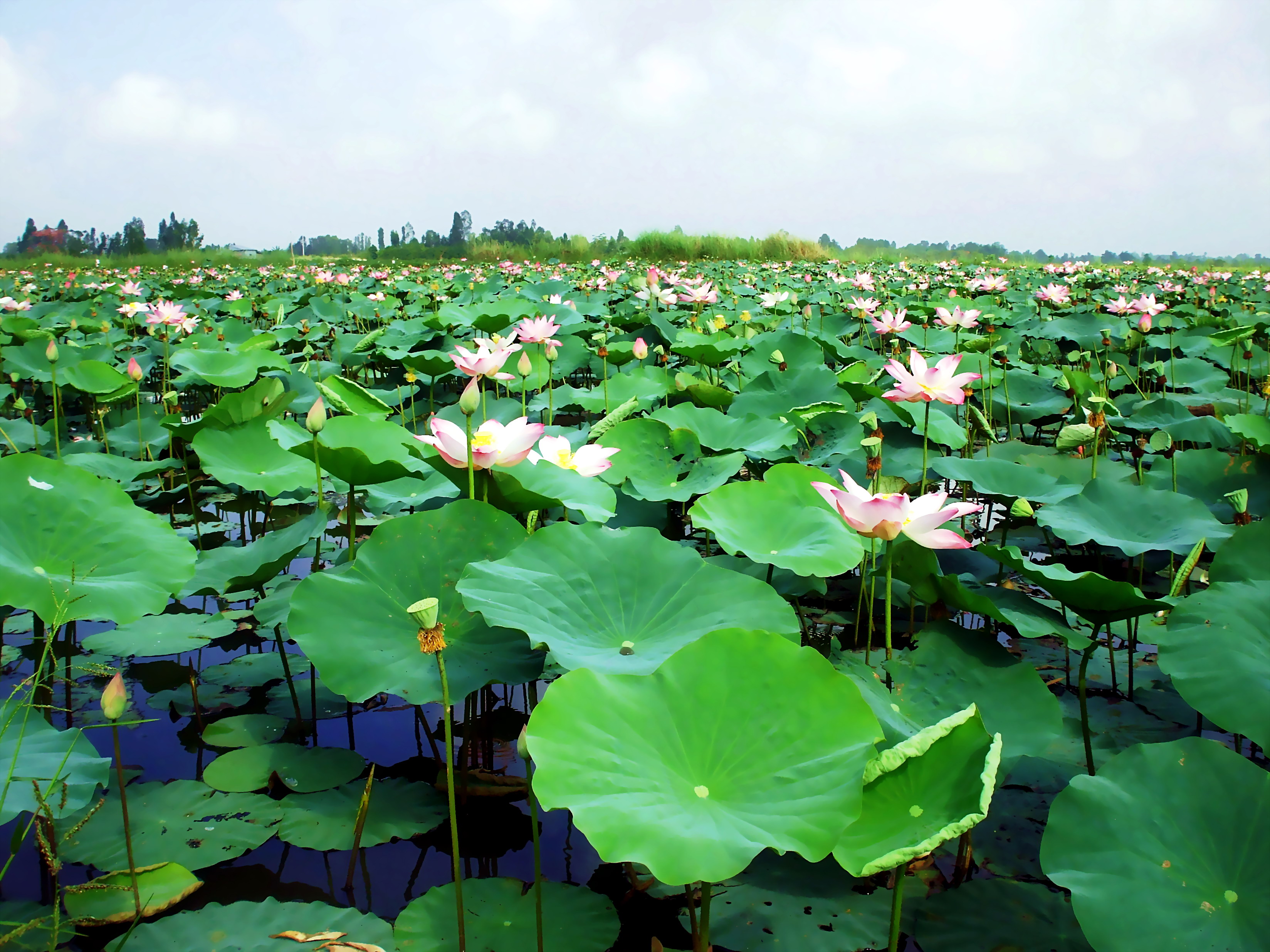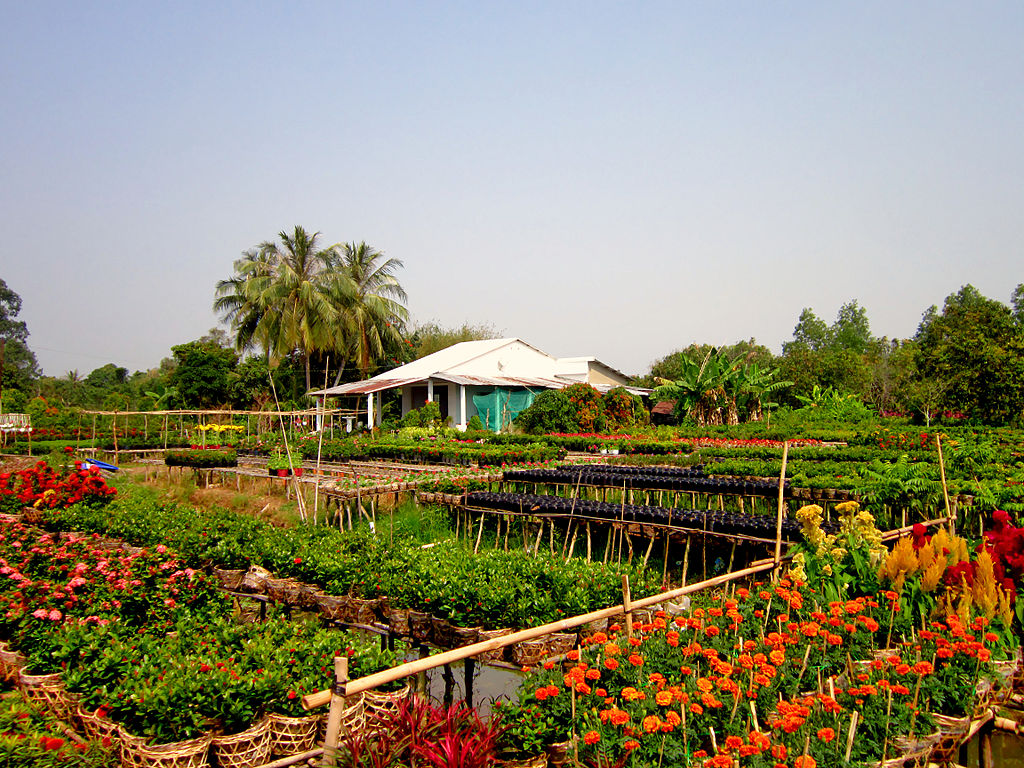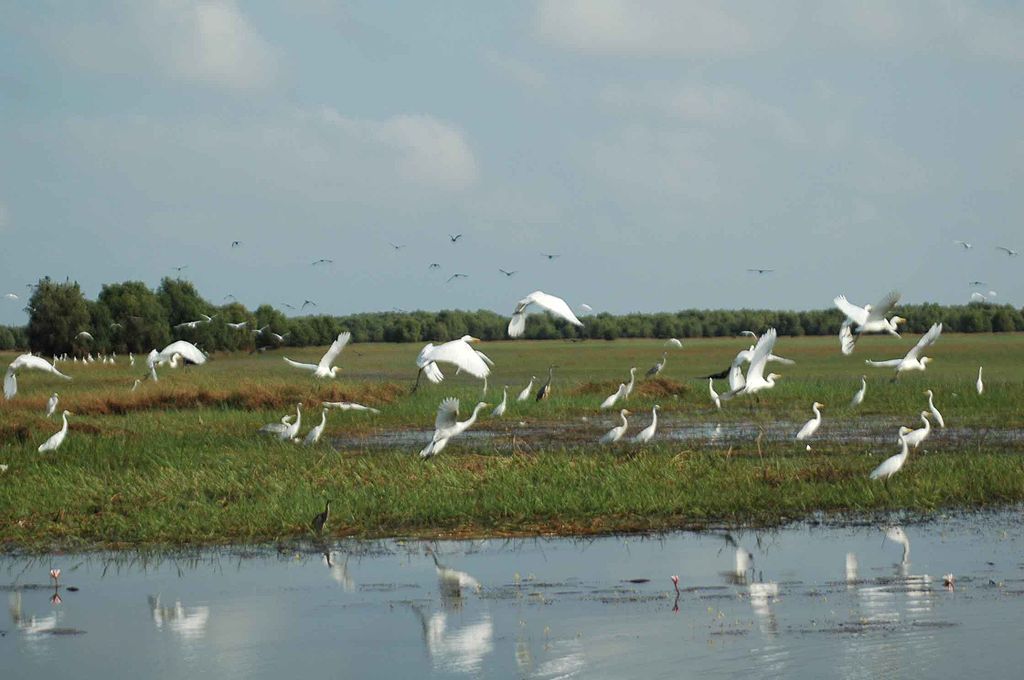From Ho Chi Minh city, traveling to the Mekong Delta sounds like one of the best choices for a discovery trip (see here for a full travel guide of Mekong Delta). There are hundreds of things to see and do in the Mekong Delta. You may find that the delta is too big to be discovered all at once, not to mention solely seeing places will not give you a sense of the true local beauty. I suggest an in-depth adventure through selective spotlights in one province. You can slowly spend your time discovering the beauty of life in this area. In this article, I will walk you through Dong Thap province – no floating markets, only flowers, swamps, and old houses. Will you join me?

There exists a Vietnamese idiom about this place:
“The most gracious of Dong Thap Muoi is its lotus
The most gracious of Vietnam is our Uncle Ho’s name”
Located roughly 150 kilometers from Ho Chi Minh City, Dong Thap is known for its friendly people, amazingly beautiful lotus flowers, and three authentic, rich of value spotlights that can’t be missed. Let’s go!
Tan Quy Dong Flower Village, Sa Dec city, Dong Thap province
Mekong Delta is known as the rice bowl of Vietnam, which makes this village a flower bowl of the region. If you are a flower lover, you will fall in love at first sight! If you don’t love flowers, maybe second sight! As one of the largest regional flower suppliers, Tan Quy Dong Flower village brings you the sort of authentic experience that will surely enchant your soul! Flower planting is their traditional job. Today, more than 1500 families in town are earning their living with this delicate business. Furthermore, the business is expanding to several other areas in the city. Sa Dec is now one of the most beautifully colorful cities of the Mekong Delta.
Not a natural wonder, neither an artistic heritage city, Tan Quy Dong village has made itself famous thanks to the hard work of the locals. The village takes advantage of the benefits of the rich alluvial Tien River. It seems that generations of flower farmers here have been well aware of their great fortune. Hence, they have restlessly been building the town into a valuable, well-recognized destination for flower lovers and experience-seeking travelers.

Large farms with a great diversity of species are what you will soon notice here. Local artistic farmers have been creating new plant masterpieces. Imagine how charming it is to get lost in a forest of flowers! Walk along Tien river bank, across road 848, Le Loi street, Sa Nhien – Cai Dao, Sa Nhien – Ong Thung, you will be enchanted with a colorful, aromatic ocean of hundreds of flower species. There are around 50 rose species that generate good economic benefit in town, namely: Grada rose, Cleopatra rose, Korokit rose, and Marseille rose. You can drop by Tu Ton Rose Garden – one of the most famous rose gardens in town, where you can find your green roses, bi-color roses, and many other rose species. Ask the farmers, there are stories behind each type of flower that you can take with you, about their meaning, history, or economic value.
Visit the village any time of the year, but spring is the most beautiful season. If you wish to see its most busy days, make your trip two or three weeks before Tet Holiday, when all the farms are eagerly preparing for the most exciting time of the year. Isn’t it so interesting to feel the true sense of local life here?
Tram Chim National Park
It would be a true pity if you visit Dong Thap province without spending at least an afternoon in Tram Chim National Park! As the fourth largest biosphere reserve of Vietnam, the 7,612-hectare national park is a huge natural part of the local region. It is also a good traveling spot which hasn’t lost its natural charm. Located in the center of Dong Thap province, the park has a complicated system of swamps, grass-plots, and crossing canals. Therefore, you will enjoy visiting all the interesting areas on a small boat. The park has a habitat of over 100 vertebrates, 40 species of fish, around 147 rare and precious species of birds. The red-headed cranes (Sarus Crane – among the top 15 globally endangered bird species) and the globally endangered Bengal Florican live here too.

In the dry season – from late December to early May – Tram Chim is ideal for species of immigrating birds to gather. Visit the National Park during this time and you will fall in love with the rustic natural landscape: peaceful blue skies, a gentle river flow, an immense Melaleuca forest, and hundreds of species of birds. This time is ideal for photographing cranes, especially during dawn or sunset. Tram Chim is, however, most beautiful in the rainy season, when the water from Mekong River inundates the whole area. Known as the home of the best lotus flowers, Tram Chim National Park houses very big lotuses, often in white and pink. During the rainy season, the water surface is no less beautiful than a natural painting. There, the green floating leaves float around with gracious pink lotuses and purple water lilies.
This submerged park is also famous for its thousand-hectare Wild Rice paddies. It’s also known as Rice from Heaven to express how much the local treasures this grain. Interestingly, another name for this variety of rice is ghost rice. Sometimes it blends so well with the trees that people cannot recognize it! From August to December – the flood season – you will witness the huge rice field blossoming with the rising water level. Harvest time is January. Farmers harvest this rice from midnight to early morning. When you cook this rice (often with lotus leaves for its special smell), the rice color turns pink, tastes sweet, fatty, and soft. People consider this their precious specialty.
If you are looking for an ecotourism trip in Mekong Delta, Tram Chim National Park is the best candidate. Basic tourist facilities are provided. I recommend comfy clothes, sandals, and maybe a big hat! There are some small guest houses in Tam Nong district with basic facilities if you wish to stay overnight.
Huynh Thuy Le House
If you visit this house, you will not gain much insight into how the locals live. However, it will be a pity if you bypass this house’s precious heritage. Constructed in 1895 by the wealthy Chinese-Vietnamese Huynh Cam Thuan, the 122-year-old house is the mark of a tear-shedding love story. The rich man’s last son (Huynh Thuy Le) fell in love with a young French lady (Ms. M. Darus) who had a tough early life in Vietnam. The man, eventually, had to obey family tradition and married a Vietnamese lady. In the final phase of his life, Mr. Huynh visited France, surprised Ms. Duras with a sudden call to say he had always loved her. Their story was rewritten in the book L’amant (The Lover) by M. Duras.

Dry your tears and really take a look at this house, you will find how interesting its architecture is! From the outside, the old house seems to follow a European villa’s architectural style with archways and columns full of small sculptures. In fact, these features were added afterward in 1917, when the outdoor wooden walls were re-covered with bricks. The living space represents the traditional Vietnamese three-space architectural design. Interestingly, the solemn shrine of Quan Cong saint placed in the heart of the main house is part of the Chinese culture. The beauty of three different cultures – European, Vietnamese, and Chinese – harmoniously blend together in this house, making it not only famous for its story but also precious for the aesthetic value.
You can visit this house at 225 Nguyen Hue street, Sa Dec city, Dong Thap province.
That said, one day is enough to see the floating markets. However, to deeply feel the beauty of the local people and nature in Mekong Delta, a well-planned, longer trip is recommended. You should also have a local guide to accompany your group. Above are the three most significant spotlights of Dong Thap province. If you wish to see more in Mekong Delta, follow us on our blog. For more accommodations in Mekong Delta, click here.
